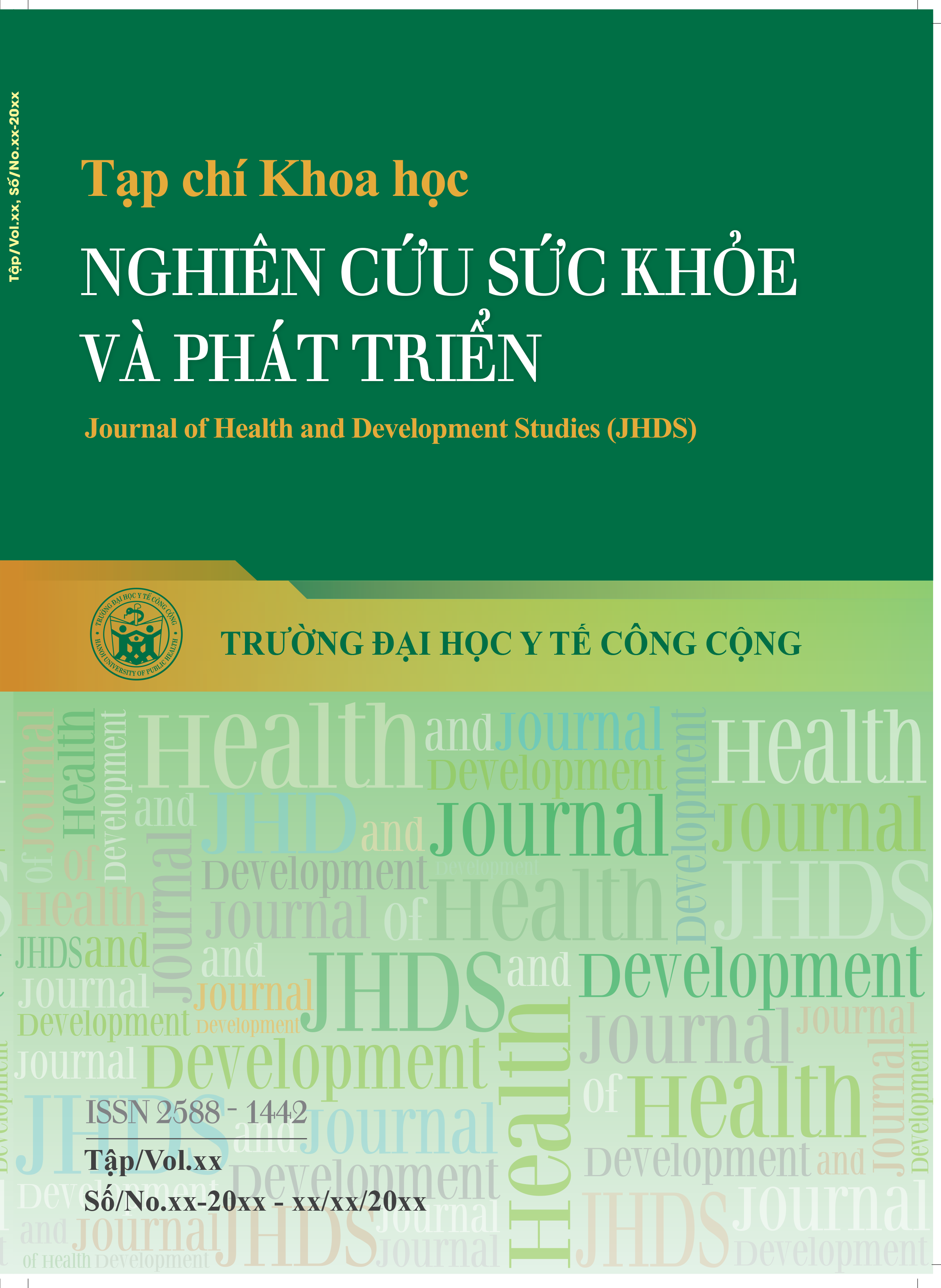Tạp chí
Khoa học Nghiên cứu Sức khỏe và Phát triển
(Journal of Health and Development Studies – JHDS)
Trường Đại học Y tế công cộng
ISSN (Print): 2588-1442
ISSN (Online): XXXX-XXXX
https://jhds.edu.vn
Acceptability of applying asthma action plan for asthma patients at a hospital in Hochiminh City, Vietnam: an implementation research
- Mã bài báo : SKPT_21_024
- Ngày xuất bản : 15/07/2021
- Số trang : 89-98
- Tác giả : Le Thi Kim Anh
- Lượt xem : ( 633 )
Danh sách tác giả (*)
- Le Thi Kim Anh 1 - Hanoi University of Public Health
- Nguyen Thi My Linh 1 - Nhan Dan Gia Dinh Hospital, HoChiMinh City
Objectives: The asthma management strategy at respiratory departments in Vietnam so far does not include the implementation of an asthma action plan (AAP). This study aimed to implement an AAP in the hospital and analyze the acceptability for the implementation procedures of patients, clinicians and asthma management units.
Methods: The implementation consisted of 2 phases. Phase 1 was a cross-sectional design that combined quantitative and qualitative methods to assess the asthma control and analyse potential obstacles of the hospital for AAP implementation. Phase 2 was a pre-experimental design to assess the acceptability in implementing the APP. Asthma control was assessed by GINA’s criteria. Implementation strategies included interventions at both organization (issued a procedure and a guideline of consulting the AAP for patients) and individual levels (trained doctors in counseling and monitoring of AAP for patients; provided instruction leaflets of APP for patients).
Results: The proportion of asthma sufficient control was 59%, partial control was 30.8%, and insufficient control was 10.2%. Most of obstacles related to asthma management and control were of health facility, such as no concrete procedures in monitoring, insufficiency of infrastructure, overload of patients. Implementation strategies of AAP in this study got the acceptability of patients, clinicians and asthma management units.
Conclusion: The study showed the importance of deployment of AAP for asthma patients in Vietnam hospitals. It is essential to provide more staffs for the asthma and COPD management units, especially trained nurses.
- DOI : https://doi.org/10.38148/JHDS.0504SKPT21-024
- Chủ đề : Phòng chống các bệnh không lây nhiễm
- Loại bài báo : Nghiên cứu gốc
- Chuyên nghành : Chuyên Ngành Y
 Thông tin liên hệ : Le Thi Kim Anh
Thông tin liên hệ : Le Thi Kim Anh Email : ltka@huph.edu.vn
Email : ltka@huph.edu.vn Địa chỉ : Hanoi University of Public Health
Địa chỉ : Hanoi University of Public Health
Bài báo liên quan
- Respiratory symptoms and some related factors in waste collection workers at 2 branches in Hanoi, 2017
- Inpatients’ experience and the associated factors: A cross-sectional study at Lung hospital, Son La, in 2020
- People’s access to information and the practice of COVID-19 prevention during the first lockdown period in Hanoi in april, 2020
- Acceptability of applying asthma action plan for asthma patients at a hospital in Hochiminh City, Vietnam: an implementation research
- Quality of healthcare services and its related factors among inpatients in Ho Chi Minh Oncology hospital in 2020
- Job satisfaction and its associated factors of preventive medicine workers in northern Vietnam
- Situation of microbiological contamination in bottled drinking water products and some influencing factors in Hau Giang province in 2020
- Quality of periodic health examination service for employees and associated factors at the New Port Medical Center, Ho Chi Minh city in 2020
- Social support and related factors among the elderly in Thuy Bieu ward, Hue city
- Self-reported social support at works among nurses and associated factors. Results from a cross-sectional study in a provincial hospital in 2020.
- Students who are both victims and perpetrators of physical violence at a private high school in rural North Vietnam: Prevalence and Socio-Demographic Correlates
Bài viết mới nhất
- Một số trang web hữu ích đối với các nhà khoa học
- Dành cho chuyên gia
- Tạp chí Khoa học Nghiên cứu sức khỏe và Phát triển duyệt tối đa 1,0 điểm ngành Y trong Danh mục Tạp chí khoa học được tính điểm của Hội đồng giáo sư Nhà nước
- CHÚC MỪNG NGÀY BÁO CHÍ CÁCH MẠNG VIỆT NAM (21/6)
- GS.TS Hoàng Văn Minh - Hiệu trưởng Nhà trường 'lọt top' nhà khoa học có chỉ số trích dẫn hàng đầu thế giới

 File toàn văn
File toàn văn